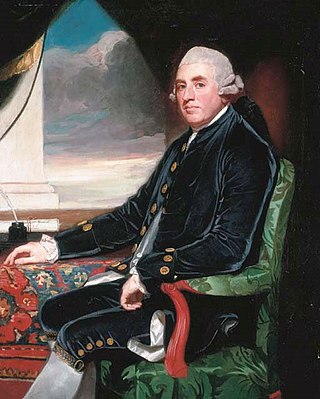
Baron Farnham, of Farnham in the County of Cavan, is a title in the Peerage of Ireland. It was created in 1756 for John Maxwell, who had previously represented Cavan Borough in the Irish House of Commons. John Maxwell's son, the second Baron, was created Viscount Farnham in 1760 and Earl of Farnham in 1763. Both titles were in the Peerage of Ireland but became extinct when he died childless in 1779. His brother and successor, the third Baron, was again created Viscount Farnham in 1781 and Earl of Farnham in 1785. These titles were also in the Peerage of Ireland. His son, the second Earl, sat in the House of Lords as an Irish representative peer from 1816 to 1823. However, he had no children and on his death in 1823 the viscountcy and earldom became extinct.
Contents
- Barons Farnham (1756)
- Earls of Farnham, first creation (1763)
- Barons Farnham (1756; reverted)
- Earls of Farnham, second creation (1785)
- Barons Farnham (1756; reverted) 2
- Maxwell baronets, of Calderwood (1627)
- References
He was succeeded in the barony by his first cousin, the fifth Baron. He was the eldest son of The Rt Rev. and Hon. Henry Maxwell, Lord Bishop of Meath, third son of the first Baron. Lord Farnham sat as a Member of Parliament for County Cavan and was an Irish Representative Peer in the House of Lords from 1825 to 1838. His nephew, the seventh Baron (who succeeded his father in 1838), also represented County Cavan in the House of Commons and served as an Irish Representative Peer between 1839 and 1868. Lord Farnham and his wife were killed in the Abergele train disaster of 1868. The title then passed to his younger brother, the eighth Baron, who had earlier represented County Cavan in Parliament. He was succeeded by another brother, the ninth Baron, who also sat as a Member of Parliament for County Cavan. In 1885 he succeeded a distant relative as eleventh Baronet of Calderwood. On his death, the titles passed to his nephew, the tenth Baron. He served as Lord Lieutenant of County Cavan and was briefly an Irish Representative Peer from 1898 until his early death in 1900. His son, the eleventh Baron, sat in the House of Lords as an Irish Representative Peer from 1908 to 1957. As of 2014 [update] the titles are held by his grandson, the thirteenth Baron, who succeeded his elder brother in 2001. Lord Farnham is the son of Lieutenant-Colonel the Hon. Somerset Arthur Maxwell. He lives in Oxfordshire in Great Britain.

![General Sir William Maxwell [7th Baronet?]. Painting by Henry Raeburn, Sao Paulo Museum of Art collection. Sir Henry Raeburn - General Sir William Maxwell.jpg](http://upload.wikimedia.org/wikipedia/commons/thumb/f/fc/Sir_Henry_Raeburn_-_General_Sir_William_Maxwell.jpg/250px-Sir_Henry_Raeburn_-_General_Sir_William_Maxwell.jpg)
The Maxwell baronetcy of Calderwood was created in the Baronetage of Nova Scotia in 1627 for Sir James Maxwell (died c. 1670). The 2nd baronet died without issue, and was succeeded by a son of Colonel John Maxwell who died in Dunbar in 1650. The 6th baronet also died without issue, and was succeeded by the son of Alexander Maxwell of Leith, third son of 4th baronet. This line too failed, when his grandson, the tenth Baronet died in 1885. The next holder was the aforementioned 9th Baron, who succeeded as eleventh Baronet. The title passed to the 10th Baron and continued to his descendants.
The Farnhams are remembered in the name of one of the main streets in Cavan town, Farnham Street, as well as in the name of a hotel, The Farnham Arms, which has the family crest with inscription Je suis pret (I am ready) above the door.
The family seat was Farnham House, near Cavan, County Cavan.













